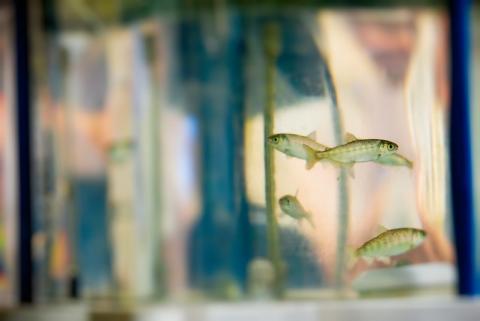Supporting Research

Traits-Based and Surrogate Fish Assessments
There are a variety of fish species that could potentially be impacted by hydropower, especially given the forecast for hydropower development throughout the world in the coming decades. However, it is impractical to assess the impact of hydropower passage stressors for all fish species that could possibly be exposed to hydropower structures. Additionally, sometimes it is difficult to assess certain fish species, especially if they are of specific conservation concern and are therefore rare or endangered. Although these factors represent a challenge, HydroPASSAGE researchers developed a method to allow for continued research into how all fish species will be affected by hydropower: applying surrogate species.
Surrogate species are alternative fish species that can be used to assess the impacts of hydropower. These are species that can be readily used in experiments, and the results from these studies can be extrapolated to other fish species of concern. However, in doing so there are many important considerations. It is critical to have scientific evidence to understand if the surrogate species will be as sensitive to stressors as the original species of concern.
Therefore, the HydroPASSAGE project has focused on how to identify and evaluate appropriate surrogate species. Our team has developed a method to quantitatively identify and prioritize surrogate fish species for study, using a traits-based framework allows us to quantitatively select surrogate fish species for study and understand how the results of our laboratory studies can be extrapolated to other fish species. Additionally, our team has undertaken empirical comparisons of biological response relationships for similar species to evaluate surrogacy.
The following stressors have been examined for traits based and surrogate assessment:
1. Barotrauma